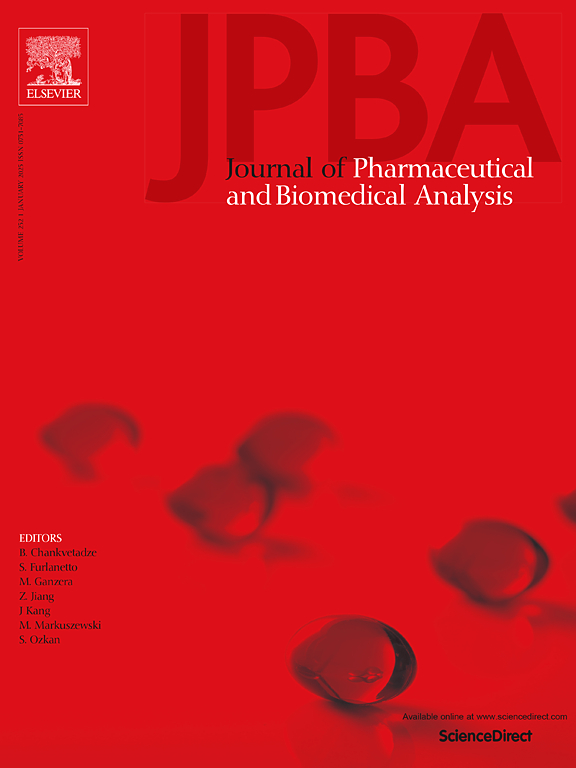Importance of intestinal microflora: Dried toad skin-radix clematidis plasma component analysis and anti-CRC core target study
IF 3.1
3区 医学
Q2 CHEMISTRY, ANALYTICAL
Journal of pharmaceutical and biomedical analysis
Pub Date : 2025-03-08
DOI:10.1016/j.jpba.2025.116802
引用次数: 0
Abstract
The focus of this study is to explore the impact of gut microbiota in different states on the blood components of couplet medications (dried toad skin and radix clematidis) and to identify drug metabolites associated with the gut microbiota. By constructing a pseudo-sterile rat model and combining non-targeted metabolomics with plasma pharmacology, we found that the plasma metabolites of couplet medications underwent significant changes in different gut microbiome environments. The GABA and PGE1 levels in the model group and the model+TCM (traditional chinese medicine) group were both significantly lower than those in the normal+TCM group. When the gut microbiota is imbalanced, drug interventions cannot significantly increase the levels of GABA and PGE1. It further confirmed the correlation between the levels of GABA and PGE1 and the gut microbiota. Based on the results of non-targeted metabolomics, we applied network pharmacology and molecular docking to explore the core targets for colorectal cancer treatment based on gut microbiota. In the end, we identified TNF and PPARG as the two core targets. These research findings provide a possibility for clarifying the molecular mechanisms of couplet medications in the treatment of colorectal cancer. It also laid the foundation for further clarifying the molecular mechanisms of Chanling Paste in the treatment of colorectal cancer.
求助全文
约1分钟内获得全文
求助全文
来源期刊
CiteScore
6.70
自引率
5.90%
发文量
588
审稿时长
37 days
期刊介绍:
This journal is an international medium directed towards the needs of academic, clinical, government and industrial analysis by publishing original research reports and critical reviews on pharmaceutical and biomedical analysis. It covers the interdisciplinary aspects of analysis in the pharmaceutical, biomedical and clinical sciences, including developments in analytical methodology, instrumentation, computation and interpretation. Submissions on novel applications focusing on drug purity and stability studies, pharmacokinetics, therapeutic monitoring, metabolic profiling; drug-related aspects of analytical biochemistry and forensic toxicology; quality assurance in the pharmaceutical industry are also welcome.
Studies from areas of well established and poorly selective methods, such as UV-VIS spectrophotometry (including derivative and multi-wavelength measurements), basic electroanalytical (potentiometric, polarographic and voltammetric) methods, fluorimetry, flow-injection analysis, etc. are accepted for publication in exceptional cases only, if a unique and substantial advantage over presently known systems is demonstrated. The same applies to the assay of simple drug formulations by any kind of methods and the determination of drugs in biological samples based merely on spiked samples. Drug purity/stability studies should contain information on the structure elucidation of the impurities/degradants.

 求助内容:
求助内容: 应助结果提醒方式:
应助结果提醒方式:


